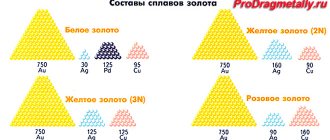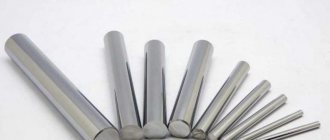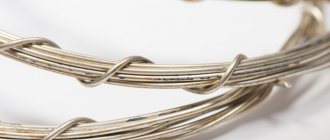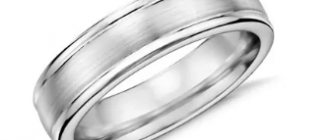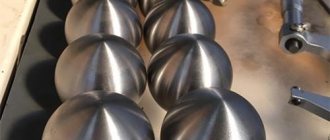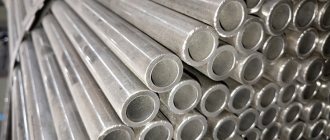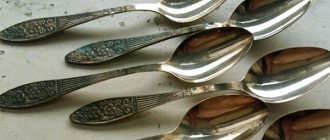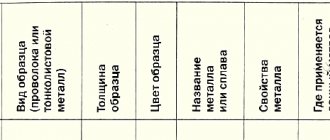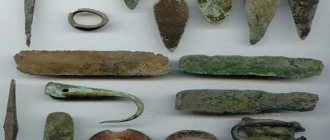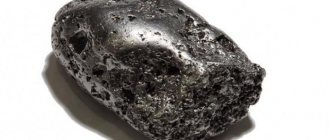Metal properties
Cupronickel contains copper and nickel. It belongs to metals. Depending on the composition of the ligature, it has a silver, gray, or leaden color.
Important: the main element in the alloy is copper.
Characteristics:
- The alloy is highly plastic, has malleability, and stretches well.
- High corrosion resistance.
- High mechanical strength.
- The structure of the alloy allows for high-quality polishing and soldering of products.
Chemical properties:
- resistant to most acids;
- does not collapse when exposed to salts;
- up to a temperature of 150°C does not enter into oxidative reactions.
Please note: do not clean cupronickel dishes with chlorine or use toothpaste.
Advantages and disadvantages
Like other metals and alloys, cupronickel has its strengths and weaknesses.
Advantages:
- Cupronickel cutlery conducts heat slowly and does not heat up when in contact with hot food.
- Low price. The characteristics of this material are similar to silver, but do not have such a high price.
- Products made from cupronickel look as beautiful as silver.
- Does not emit harmful substances during operation.
- High resistance to corrosive processes.
- High strength.
- The material does not change shape and characteristics during long-term use.
Flaws:
- A dark coating quickly appears on the surface of cupronickel products. To maintain the appearance of an item in its original condition, it is necessary to constantly wipe its surfaces.
- You rarely see cupronickel products in stores due to their declining popularity.
Nickel silver products quickly lose their original appearance without proper care. To improve the appearance of an item, you need to use toothpaste or jewelry care liquid. It is not recommended to use compounds containing chlorine. This component will accelerate the process of darkening the surface. You can't use soda. Its particles scratch the surface of the alloy.
Advantages and disadvantages
The formula for successful rafting has a lot of advantages:
- Attractive appearance; The metal is difficult to distinguish from silver in appearance.
- It is environmentally inert, which allows it to be used in the production of tableware and medical instruments.
- Cupronickel resists rust, so the alloy is used in aggressive environments.
- It has ductility and malleability: the metal is easy to process.
The disadvantages include the high price.
Storage and cleaning
Cupronickel items are stored in a dry place. Crockery and cutlery made of cupronickel require mandatory cleaning and wiping dry after each use, otherwise the utensils will become covered with dark stains.
Clean devices under running water only with soda. If the plaque does not come off, then dry cleaning with tooth powder or crushed chalk is allowed. It should be taken into account that with this method the likelihood of scratches increases. Sink and stove cleaners should not be used as their abrasive particles are too large.
If the coating does not come off, you need to boil the devices in a soda solution .
Pour a liter of water into an aluminum container and dissolve 50 grams of baking soda. The liquid is brought to a boil and cupronickel is placed in it. The products are boiled over low heat for an hour, then washed in cold water, cleaned with soda and wiped dry.
Alloy composition and grades
The composition of classic cupronickel includes nickel (5-30%).
We recommend: MAGNESIUM – fiery metal
If necessary, the alloy is alloyed:
- iron;
- zinc;
- manganese;
- cobalt.
More than 60 brands of cupronickel have been developed. The most commonly used are MH19 (copper + nickel) and MNZHMts 30-1-1 (a mixture of copper with nickel, iron, manganese).
In addition, MH16 grades are in demand; MH25; MNZHMts10-1-1.
Cupronickel plate
Alloy characteristics
The main properties of cupronickel are the high strength of the resulting compound, ductility and corrosion resistance to aggressive environments, in particular sea water. A characteristic feature is the color of cupronickel, which is visually difficult to distinguish from silver. This feature has served, since its invention, to be widely used in jewelry as a cheap analogue of silver.
The alloy contains the following metals:
- Copper – from 70 to 95%;
- Nickel – up to 30%;
- Iron – up to 0.8%;
- Manganese – up to 1%.
Initially, the alloy contained zinc, but nowadays compositions of copper, nickel and zinc are called nickel silver. Being somewhat cheaper than cupronickel due to the replacement of part of the nickel with zinc, nickel silver has become widespread in the production of coins.
The thermal conductivity of cupronickel compositions is one of the lowest among all copper alloys and is significantly lower than that of pure copper, and even more so, silver. And since the thermal conductivity of silver is the highest among all metals, this fact can serve as the main distinguishing feature of products made of silver and cupronickel.
Product made of cupronickel
The specific heat capacity of the alloy is approximately equal to the average heat capacity of copper and nickel and is 0.4 kJ/(kg°C) for nickel silver.
The melting point of copper and nickel alloys depends on the percentage composition of its constituent components, but remains within the range of 1150 – 1230 °C.
Application
Areas of application of cupronickel:
- shipbuilding;
- medicine;
- hardware engineering;
- jewelry production;
- coin production;
- production of fittings for pipelines.
